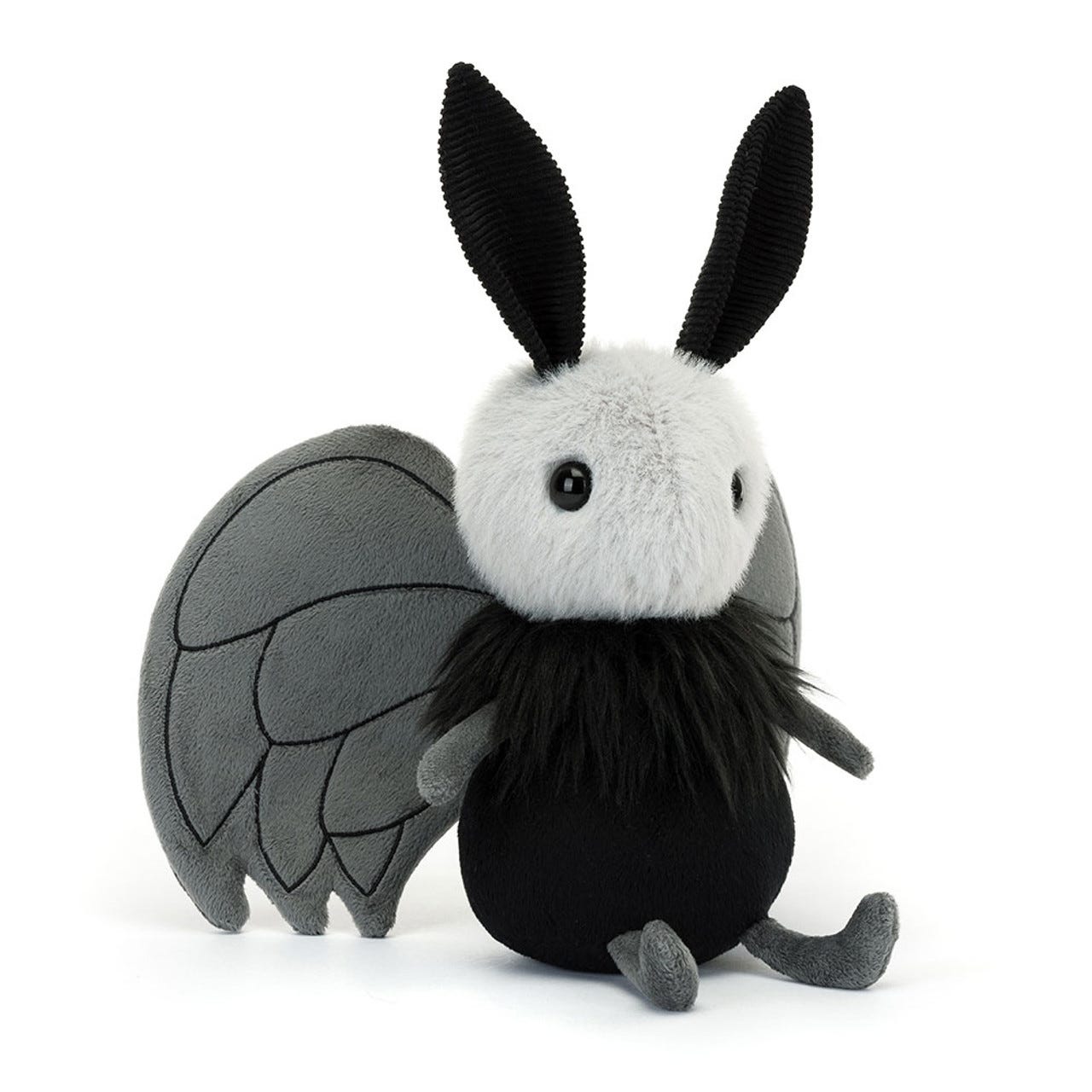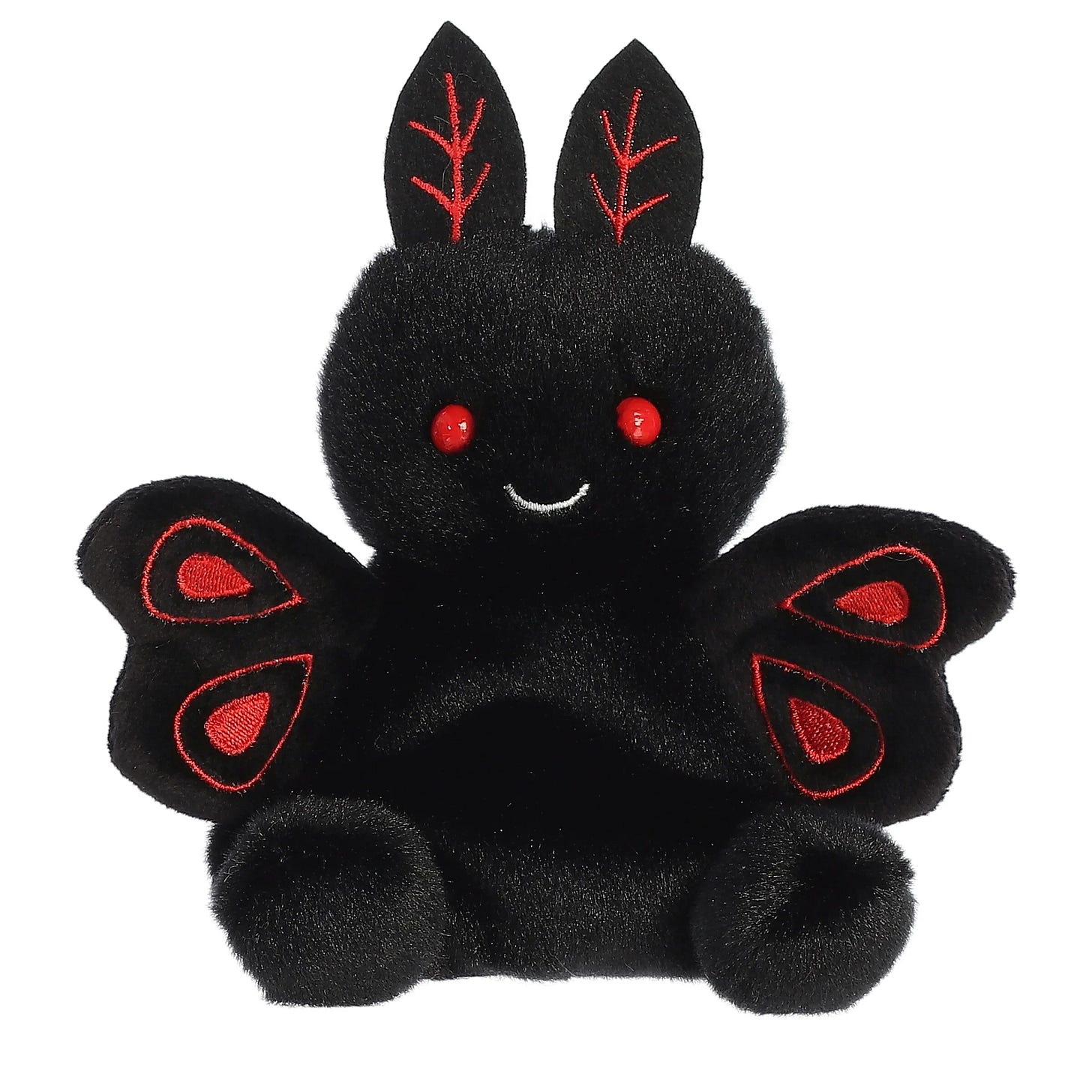Plushie Trends & Gatekeeping my Influence
Why I now own five different Mothman plushies and #BookPosting
Big Plushie: Mass Produced Friends
It’s a well-known secret that I love plushies. They are art—soft sculptures, and lessons in design. From a young age, I gravitated toward plush toys, aided by my mom being swept up in the Ty Beanie Baby craze. My imaginary friends often resembled the stuffed animals that took over half of my twin bed every night. In 2020, the loneliness of a global pandemic and a touch of baby fever reignited my appreciation for plushies. Build-a-Bear (BAB) broke my brain when they released the first Grogu (aka Baby Yoda) plush. His big, dark, plastic eyes and semi-realistic sculpt called for me.
I needed it. I needed it so bad. And so did everyone else. As we all eagerly awaited the release date, the moment he dropped I was number 1,275 in the online queue. 70 minutes into the release, Grogu was officially sold out. He remained out of stock for months, and BAB's social media comments were inundated with pleas to "bring back Baby Yoda!!" This ignited the collector in me and reopened a whole world that my inner child could lovingly explore.
Jumping into the world of plush collecting, I quickly learned the ropes. My inner child's demands soon transformed my modest collection of one into a multitude that could no longer be stored in a single wooden crate. Over the past four years, I’ve been fascinated by the dynamics of plush trends. Who sets these trends? Who is the leading brand? Who is the blueprint?
At the time of writing, I consider the big four plush companies world to be Jellycat, Build-a-Bear, Aurora, and Squishmallow. In late June, BAB released the third installment of their Lovable Legends Collection: Mothman. It sold out in under an hour. Collectors got a heads up when a secret Discord channel pinged the night before with a leaked image from the UK site. The moment I opened my eyes, I logged on and secured my order. There was no way I was not going to have him. There was no way I wasn’t going to have more than one. Plush collecting has become my version of day trading. Resale value is my stocks. I am the Patrick Bateman of r/plushies.
The day before Build-a-Bear released their Mothman plush, Jellycat also released their first take on this lovable cryptid, Miff the Mothman. Though no stranger to producing high-quality, high-price point mythical creature ‘soft toys’, the hype for the release of Miff was huge following leaked images from overseas plush influencers.
A month prior, Aurora released Mortimer the Mothman through their miniature line, Palm Pals.
A year ago in 2023, Squishmallow released their Hot Topic exclusive, Perkin the Mothman, followed by Tove the Mothman in 2024.
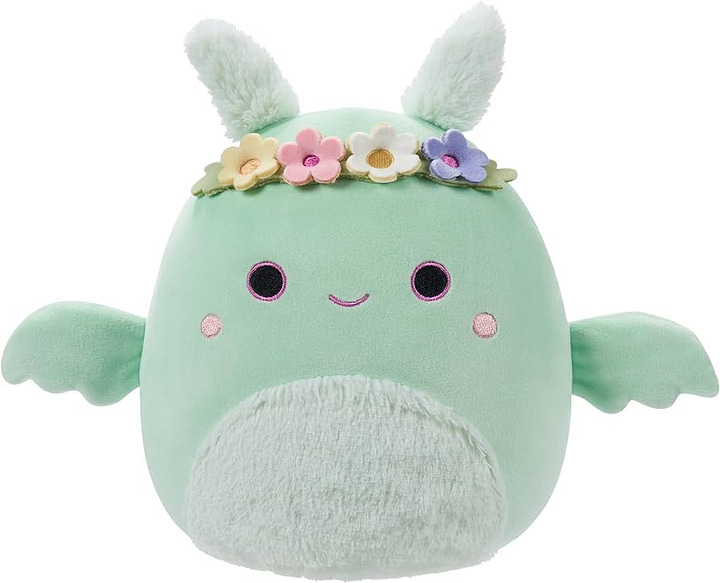

But despite this rapid release schedule, Mothman plushies are not new. Less popular and more alternative brands like Squishable have also had their take on Mothman with their January 2023 release.
The highly anticipated crowdfunded plush line, Snughouls by Tiny Teeth, includes three different themed Mothman, amongst other cryptids.
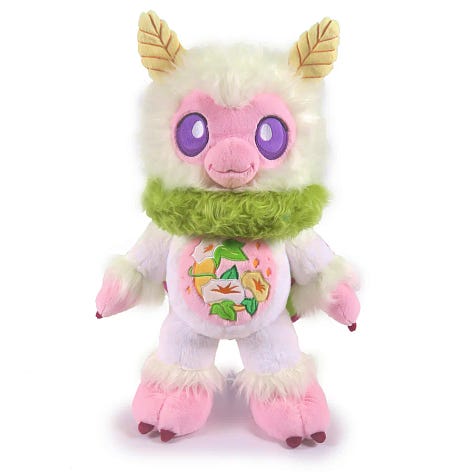
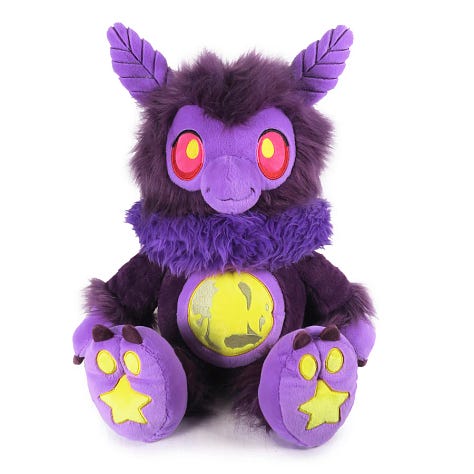
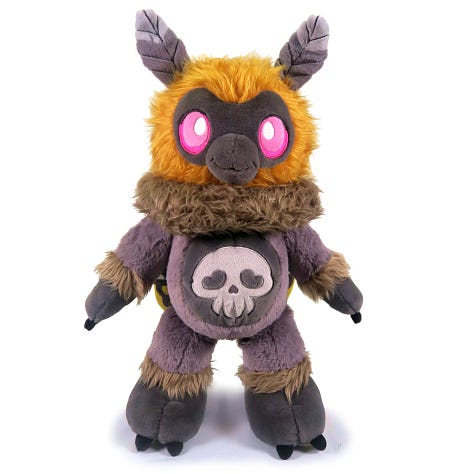
But this begs the question: when did the general market become obsessed with this West Virginian cryptid? How does an obscure creature or animal become the biggest thing in mass-produced plushies and how do we contribute to this trend? Both the axolotl, an exotic aquatic amphibian, and South America’s largest living rodent, the Capybara have become the desired cuddle pal of a generation. Who decides these trends? Is it a race to see who can do it first, or who can do it better? And why am I now suddenly the owner of five different Mothman plushies? (No hate. I’m a big fan)
According to Google Trends, plushies began trending widely during the holiday season of 2020, with Squishmallow experiencing the highest spike in search results among the brands mentioned. Launched in 2017 by Kellytoy, Squishmallows seemingly appeared out of nowhere and became hard to get, creating a scarcity craze for some of their designs following TikTok videos of #Squishhunts and young women’s large collections of this seemingly incredibly popular brand. Although Build-a-Bear remained popular, the pandemic made the novelty of the hands on experience of building your own bear less desirable when compared to the super soft, squishy Squishmallow that you could find at your local Walmart or Costco.
While multiple brands contribute to the plushie trend, Squishmallow seems to have carved out a significant monopoly in recent years. Their rise to fame was meteoric, fuelled by clever marketing, strategic deals with companies such as Disney and Pokémon, and a product that perfectly fit the demand for comforting, collectible items with an affordable price point during the height of the pandemic. Squishmallows' appeal lies in their unique combination of softness, cuteness, and variety, offering something for every collector.
Build-a-Bear, a long-standing leader in the plush industry, has managed to maintain its relevance by continually introducing innovative collections and collaborating with popular franchises. However, the hands-on, in-store experience that was once a cornerstone of their appeal became a challenge during the pandemic, making room for other brands to rise.
Jellycat, known for its high-quality, whimsical designs, and Aurora, with its diverse range of plush toys, have also maintained strong followings. Yet, neither has matched the explosive growth and fervent collector base of Squishmallow (though collecting Jellycat has taken off more widespread in 2024).
The trend-setting nature of Squishmallows is evident in their ability to turn niche interests into mainstream phenomena. From cryptids like Mothman to more obscure animals like axolotls, Squishmallows has a knack for predicting and shaping consumer desires. Their strategic scarcity and limited editions create a sense of urgency and exclusivity, driving both collectors and casual consumers to buy. Their simple, nearly templated design also allows for a quick production timeline, allowing them to jump on trends before other companies.
A year ago, a custom Moth from a Build-a-Bear Corporate event surfaced on Reddit, adding to the intrigue and speculation among collectors. Build-a-Bear’s product description described their Mothman plush as a "mysterious winged friend" who "appears by popular demand…”. The January 2024 r/BuildaBear Mothman leak helped grow the hype, creating demand and is now a testament to how community and anticipation drive the plush market.
"The remarkable response to Mothman is simply another fun example of Build-A-Bear's ability to identify pop culture concepts that successfully connect with our teen and adult fanbase, which comprises about 40% of our business," Sharon Price John, president and CEO of Build-A-Bear Workshop, said in a statement provided to FOX Business.
From my perspective, rather than a clear market leader, each brand seems to draw inspiration from one another in a competitive race to keep relevant. Take Jellycat, for example, which has expanded its Amusables Collection to include designs that rival BumBumz. Recently, Build-a-Bear has launched SKOOSHERZ to directly compete with Squishmallow, a move which has sparked legal debates). Alongside this, they’ve also introduced a new Mini Beans line to challenge Aurora's popular Palm Pals. This competition drives innovation, with every brand vying to capture the hearts and wallets of consumers and collectors alike. What began as inner child-pleasing has transformed into a well-curated collection, driven by both community and competition. But I am not alone — with nearly 40% of the plushie consumer market comprising of teenage and adult enthusiasts, the race continues, each brand anxious to be the first across the finish line.
Gatekeeping Influence: Book Thread
I am not posting my monthly read list on Twitter anymore because if you want my influence, you gotta work for it (by simply subscribing to my newsletter!)


Pictured are my recent acquisitions and current reads.
For audiobooks, I’ve been listening to:
The Age of Magical Overthinking by Amanda Montell
Why Are People Into That? : A Cultural Investigation of Kink by Tina Horn
Okay, thank you, bye!






